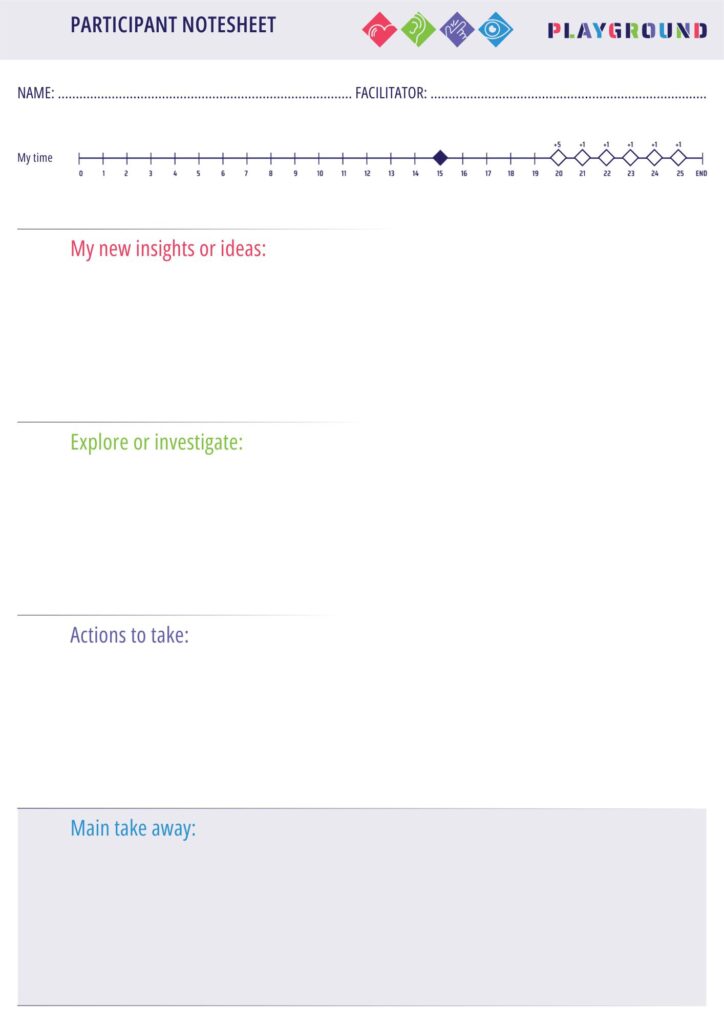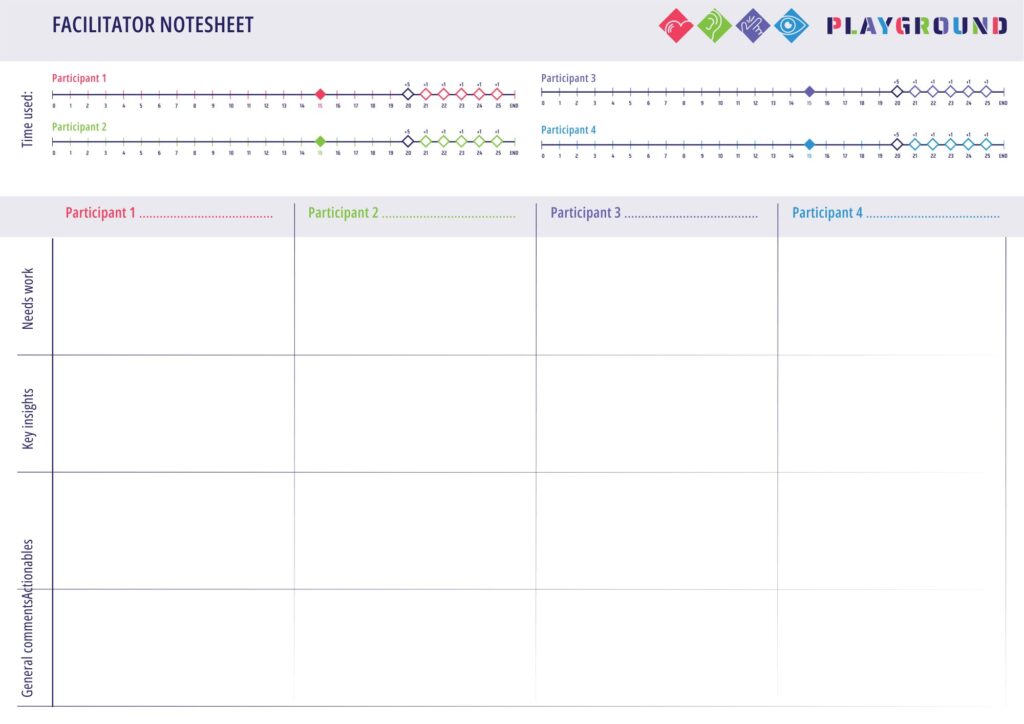Game instructions Playground for Entrepreneurs
In this generic gameplay, 2-6 participants can participate in a session plus a facilitator. We find that in general, 2-hour sessions are ideal, although the contents of the game provide for much more. The contents may be divided over several coaching sessions, providing for repeatedly rich conversations. It is a coaching tool aimed at (entrepreneurship) coaches, who play it with their participating entrepreneurs, entrepreneurship students and small business owners.
Elements:
- Gameboard that consists of 4 areas (heart, ear, eye and hand)
- Tiles with numbers 1-6, differentiated per area and internal/external circle
- Reward cards (30)
- Dice (one)
- Timer
- Notesheets to write down insights, ideas and to-do's
Preparations: Lay out the gameboards and the according tiles on top. Shuffle the cards and put them in a stack on the side of the board.
Sometimes fellow players are explicitly asked for advice, depending on the dynamic you use and the time you have available you may expand this to all questions.
The facilitator of the game should manage timekeeping for all participants.
Use the external circle of the gameboards (colored tiles) with a group that is just starting out with their ideas and projects. With a group of participants that manages projects that are more advanced, you may use the internal circle (white tiles).
Video game instructions:
Game Principles
The core of the game is the sharing and feedback dynamic between the participants and facilitator. Therefore, the facilitator's most important job is to keep the space open and safe for people to share their experiences.
There are no right and wrong answers in this game, as answers may depend highly on each individual player (entrepreneur) and project.
Feedback may take any shape; advice, stories, or questions, for example.
This is a collaborative game; as players and their projects may vary widely, winning the game doesn't make sense as everybody's journey is different. We focus the game on helping everybody along and all players are winners. The only competition we found that makes sense, is the competition with oneself over time.
As a starting facilitator you can use the game and questions as a guide, as an experienced facilitator you may use them as a hook to go in-depth into the proposed themes and subjects.
During gameplay, try to make stories and examples as specific as possible. Avoid going into too generic advice or clichés, stimulate your participants to do the same.
Notesheets can help keeping track of insights, ideas and to-do's that come up during the session. You can find pdfs of the notesheets here, print them and hand them out to the participants.
Game Instructions
Start of the game: All players start at the Heart-area in the external circle of the gameboard (colored tiles) and briefly comment their initial idea. This might be the idea that they are working on at the moment or another idea that they would like to explore while playing the game. The players roll a dice; the player who rolls the highest number starts and after that the players take turns clockwise.
The players take their turn to roll a dice to define which questions they need to answer. The player answers the question (see: timekeeping) and the other participants have the chance to express their feedback. When all participants have done so, the player in turn has the chance to give a reward card out to the player that gave them the most useful feedback, which is also a good opportunity for themselves to come to a conclusion about the question and answers.
Each player plays their first round in the Heart area, after that they can choose the area they would like to play at each turn. When playing the external circle, they may cross over to the internal circle once they have played at least one question of each area.
The players may keep the tiles of the questions they answer to keep track of their progress. Players may use one pass per session; they would use this if the question they get is completely irrelevant to their idea. In this case, they can trow the dice again to receive a new question. If questions are repeated, the player may decide whether (s)he wants to answer it or roll the dice in order to receive a different question.
When the game ends, players briefly pitch the most important development insights they have gained about their idea through the gameplay, as well as actionable next steps for their idea.
Timekeeping
Timekeeping is essential for this entrepreneurship game. Especially at the start of the game, the facilitator may need to stimulate some of the participants by asking them questions that invite them to go more in-depth, however, it may be much more frequent that the facilitator needs to make sure the participants keep within their answering or feedback time.
In general we've found two ways of timekeeping useful in generic gameplay:
- Participants playing their turn have a maximum of 2 minutes to answer their question, each other participant has up to 1 minute to feedback on the participants' answer, using stories, advice, questions, etc.
- Each participant manages a chess timer of 15 minutes (you can adjust this according to the time available and the number of participants) that should include their answers to the questions and their received feedback.
Anything that is left unsaid can be written on notes and passed to the according participants, who can refer to it after the session if they want.
We found that it is useful to agree upon a signal (for example, raising your hand) to invite the speaking participants to finish their sentence or idea when time is over. This is an effective as well as a respectful way of keeping time.
Before you ask...
What if my participants come in without an initial idea?


